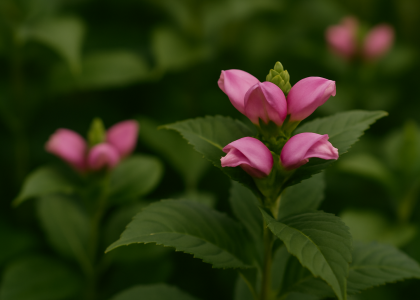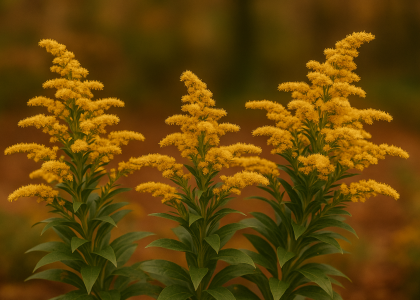Forsythia is a vibrant and fast-growing shrub that is often one of the first plants to bloom in the spring, offering a burst of cheerful yellow flowers. Known for its striking golden blossoms and bright green foliage, Forsythia is a perfect choice for gardeners looking to add early-season color and structure to their landscape. Whether used as a border plant, a hedge, or a specimen plant, Forsythia is an excellent choice for gardeners seeking a low-maintenance, eye-catching shrub. In this guide, we will provide all the essential information about planting, caring for, and propagating Forsythia, along with expert tips to help it thrive in your garden.
What is Forsythia?
Forsythia (Forsythia spp.) is a deciduous shrub that belongs to the olive family. It is widely recognized for its vibrant yellow flowers, which appear in early spring before the leaves even emerge, creating a bright and welcoming display. Forsythia is a fast-growing plant that can be used in a variety of ways, from adding a pop of color to your garden in spring to creating an informal hedge or privacy screen. Forsythia’s robust nature and ease of care make it a favorite among both beginner and experienced gardeners.
Key Features of Forsythia:
- Flower Color: Bright Yellow
- Foliage Color: Green in spring and summer, turning yellow or purple in fall
- Height: 6 to 10 feet (depending on variety)
- Width: 6 to 10 feet
- Blooming Season: Early Spring (before leaves appear)
- Hardiness Zones: 5-8
- Special Features: Early-season color, fast-growing, easy care, attracts pollinators
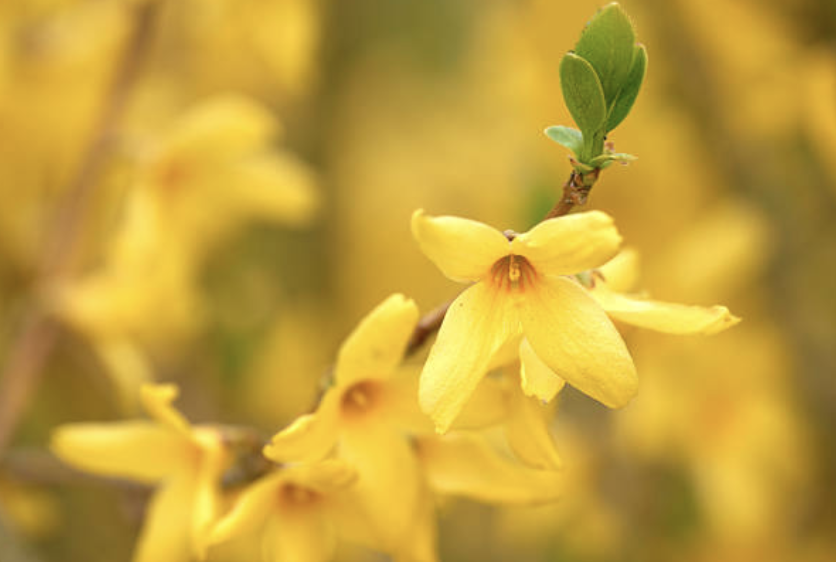
Where to Plant Forsythia
Forsythia thrives in full sun but will tolerate partial shade, though its bloom may be less abundant in the shade. It prefers well-draining soil but can adapt to a variety of soil types, including clay, loam, and sandy soils. Forsythia is highly adaptable and does well in regions with cold winters, making it an ideal choice for gardeners in USDA Zones 5-8.
Ideal Planting Locations:
- Specimen Plant: Due to its vibrant flowers and compact size, Forsythia can be planted as a specimen plant in the garden to serve as a focal point in spring.
- Hedges and Screens: Forsythia’s rapid growth and dense foliage make it an excellent choice for creating informal hedges or privacy screens.
- Mixed Borders: Combine Forsythia with other spring-blooming plants to create a colorful border that provides interest throughout the growing season.
Expert Tip: Forsythia thrives in well-drained soil and benefits from being planted in an area with full sun for at least 6 hours a day.
How to Plant Forsythia
Forsythia is a low-maintenance shrub, but proper planting ensures healthy growth and abundant blooms. Follow these steps to plant Forsythia correctly:
- Best Time to Plant: Forsythia should be planted in early spring or early fall, avoiding extreme summer heat or winter cold.
- Planting Hole: Dig a hole that is twice as wide as the root ball and just as deep. This gives the roots plenty of space to spread and establish themselves.
- Soil: Forsythia is adaptable to various soil types but requires well-draining soil to prevent root rot. It can tolerate slightly acidic, neutral, or alkaline soils.
- Mulching: Apply a 2-inch layer of mulch around the base of the plant to help retain moisture, control weeds, and keep the soil temperature stable.
Expert Tip: Water the plant regularly for the first few months after planting to help it establish a strong root system. Once established, Forsythia is drought-tolerant and needs little supplemental watering.
Forsythia Care: Keeping Your Plant Thriving
Forsythia is known for being a low-maintenance plant, but the following care tips will help ensure it remains healthy and blooms beautifully each spring.
Light Requirements:
Forsythia grows best in full sun to partial shade. For optimal flowering, aim for 6 hours of direct sunlight per day. Forsythia planted in shade may still grow but may produce fewer flowers and have a more open, leggy appearance.
Watering:
While Forsythia is drought-tolerant once established, it requires regular watering during its first growing season to help establish a strong root system. During dry periods, water deeply once a week to promote healthy growth and flower production.
Expert Tip: Avoid overwatering, as Forsythia does not like to have its roots sitting in water. Well-drained soil is crucial for preventing root rot.
Soil and Fertilizing:
Forsythia can grow in a variety of soils but prefers well-draining, moderately fertile soil. It is not a heavy feeder, but applying a balanced slow-release fertilizer in early spring will support healthy growth and flower production.
Expert Tip: Avoid over-fertilizing, as this can encourage excessive leafy growth and fewer flowers. A light layer of compost in spring is sufficient to nourish your Forsythia.
Pruning Forsythia
Pruning Forsythia helps to maintain its shape and encourage fresh growth. However, timing is critical to ensure the plant blooms properly.
- When to Prune: Prune Forsythia immediately after flowering to avoid cutting off next year’s flower buds. Since Forsythia blooms on old wood (last year’s growth), pruning after bloom will allow the plant to develop new wood for the next season’s flowers.
- How to Prune: Remove dead, damaged, or diseased branches to improve air circulation. If the plant is overgrown, cut back one-third of the oldest branches to the ground to encourage fresh, healthy growth.
Expert Tip: If you want to shape your Forsythia or control its size, do so right after it finishes blooming. Avoid heavy pruning in late summer or fall to prevent removing potential flower buds.
Pests and Problems
Forsythia is generally pest-resistant but can occasionally suffer from a few common problems:
- Aphids: These pests may appear on the new growth. If you see aphids, wash them off with a strong stream of water or use insecticidal soap.
- Leaf Spot: Forsythia is susceptible to fungal leaf spot, which causes yellow or brown spots on the leaves. To prevent this, ensure good air circulation around the plant and avoid overhead watering.
- Root Rot: This is a common issue if Forsythia is planted in poorly-draining soil. Ensure the planting site has good drainage to avoid root rot.
Expert Tip: Keep your Forsythia healthy by maintaining proper spacing between plants and removing any affected leaves to prevent the spread of disease.
Propagation: How to Grow New Forsythia Plants
Forsythia is easy to propagate through cuttings or layering. Here’s how to do it:
- Taking Cuttings: In late spring, take 4-6 inch cuttings from healthy, non-flowering stems. Remove the lower leaves and dip the cut ends in rooting hormone.
- Rooting the Cuttings: Place the cuttings in a pot filled with well-draining soil and keep them moist. After a few weeks, roots should begin to develop.
- Layering: You can also propagate Forsythia by layering—bending a low-growing branch to the ground and covering it with soil. In a few months, the branch will form roots, and you can cut it away from the parent plant.
Expert Tip: Forsythia cuttings root quickly and are easy to propagate, especially in warm, moist conditions. If using layering, ensure the branch stays in contact with the soil until it roots.
Types of Forsythia
There are several varieties of Forsythia, each offering unique characteristics in terms of flower color, size, and growth habit:
- ‘Northern Gold’: A cold-hardy variety that grows to about 6 feet tall, producing brilliant yellow flowers in early spring. Zones 4-8.
- ‘Show Off’: Known for its larger blooms and compact size, growing to about 3-4 feet tall. It is perfect for smaller gardens. Zones 5-8.
- ‘Golden Times’: A variegated variety with yellow flowers and striking green-and-gold leaves that provide year-round interest. Zones 5-8.
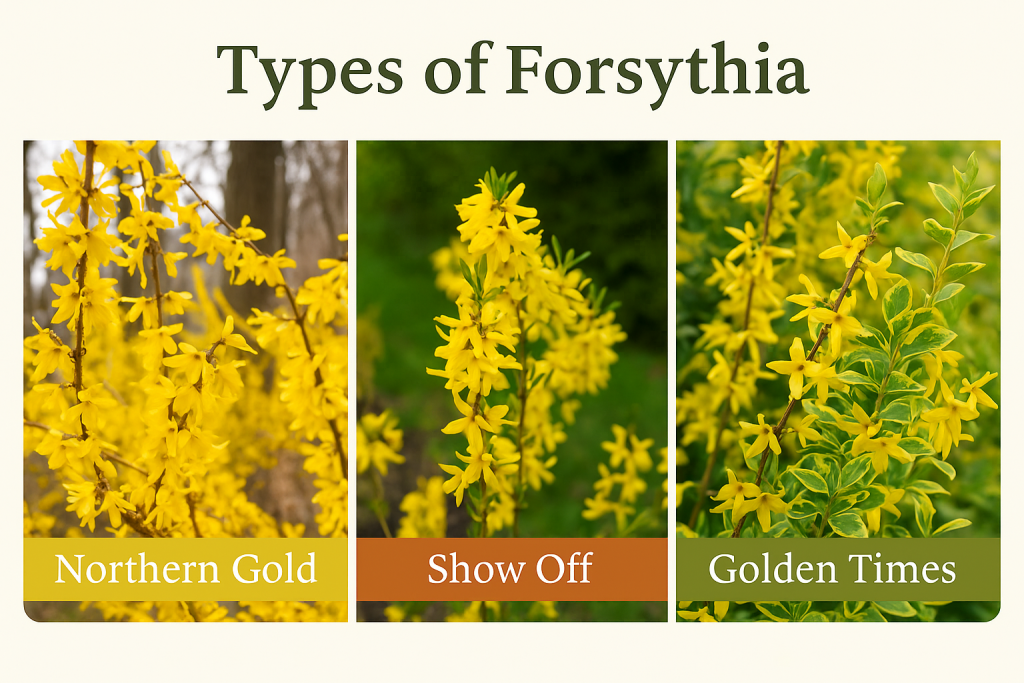
Companion Plants for Forsythia
Pair Forsythia with other early bloomers to extend your garden’s color throughout the season:
- Tulips: Their bright, bold colors complement the golden flowers of Forsythia.
- Daffodils: Another spring favorite, daffodils add a touch of white and yellow that pairs beautifully with Forsythia’s blooms.
- Hellebores: Plant Hellebores beneath Forsythia for a subtle, contrasting bloom before the Forsythia begins to show its color.
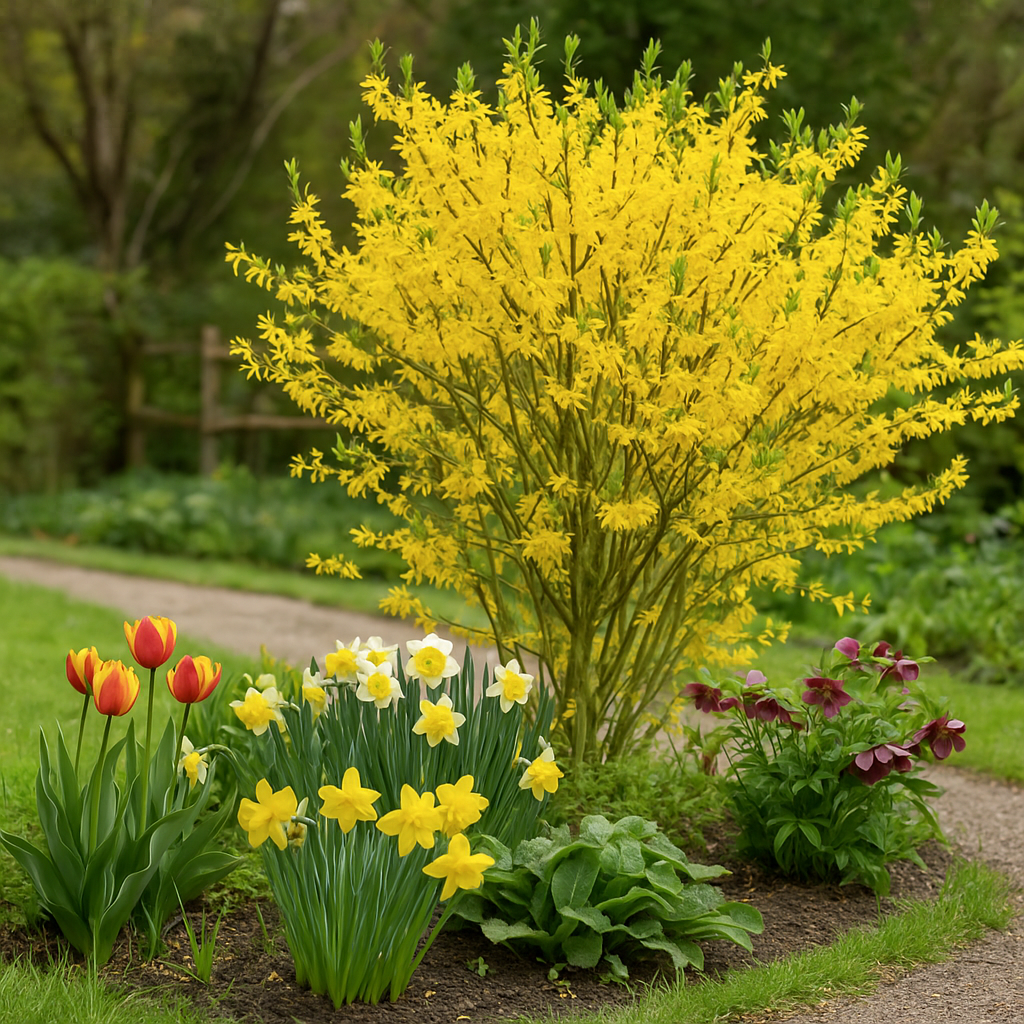
FAQ: Common Forsythia Questions
Why isn’t my Forsythia blooming?
Forsythia needs full sun to produce abundant flowers. If it’s planted in too much shade, it may not bloom well. Also, avoid pruning the shrub in fall, as this can remove next year’s flower buds.
When is the best time to prune Forsythia?
The best time to prune Forsythia is immediately after it finishes blooming in spring. Avoid heavy pruning during late summer or fall.
Enjoy Forsythia in Your Garden
Forsythia is a versatile and beautiful shrub that offers vibrant color and easy care. With its early-season bloom, fast growth, and minimal maintenance requirements, it’s a perfect addition to any garden. Whether you use it for a stunning hedge, border plant, or specimen shrub, Forsythia will bring joy to your landscape for many years.
By following the tips and techniques in this guide, you can ensure your Forsythia remains healthy, vibrant, and full of flowers, bringing early spring color to your garden.



